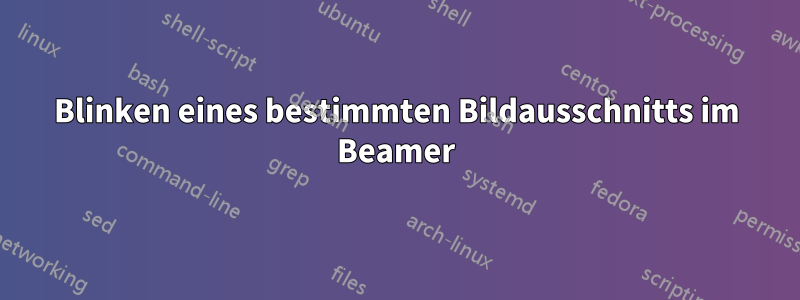
Ich habe mit Tikz ein Bild in Latex gezeichnet, wie im folgenden Code angegeben. Das mit dem folgenden Code erstellte Bild besteht aus einem rechteckigen Block, in den der Text E(s) geschrieben ist. Ich möchte, dass dieser rechteckige Block zusammen mit dem Text darin blinkt und hell leuchtet (funkelt). Wie kann ich das machen?
\documentclass[compress, xcolor=table, usenames,dvipsnames]{beamer}
\usepackage{tikz}
\begin{document}
\tikzset{every picture/.style={line width=0.75pt}} %set default line width to 0.75pt
\begin{frame}{Figure}
\begin{tikzpicture}[x=0.75pt,y=0.75pt,yscale=-1,xscale=1]
%uncomment if require: \path (0,235); %set diagram left start at 0, and has
height of 235
%Rounded Rect [id:dp22728745820859309]
\draw (134,66.75) .. controls (134,62.33) and (137.58,58.75) ..
(142,58.75) -- (196,58.75) .. controls (200.42,58.75) and (204,62.33) ..
(204,66.75) -- (204,90.75) .. controls (204,95.17) and (200.42,98.75) ..
(196,98.75) -- (142,98.75) .. controls (137.58,98.75) and (134,95.17) ..
(134,90.75) -- cycle ;
%Rounded Rect [id:dp23074367111159821]
\draw (254,64.75) .. controls (254,60.33) and (257.58,56.75) ..
(262,56.75) -- (316,56.75) .. controls (320.42,56.75) and (324,60.33) ..
(324,64.75) -- (324,88.75) .. controls (324,93.17) and (320.42,96.75) ..
(316,96.75) -- (262,96.75) .. controls (257.58,96.75) and (254,93.17) ..
(254,88.75) -- cycle ;
%Straight Lines [id:da3785057523496602]
\draw (205,77.75) -- (251.5,76.79) ;
\draw [shift={(253.5,76.75)}, rotate = 538.8199999999999] [color={rgb,
255:red, 0; green, 0; blue, 0 } ][line width=0.75] (10.93,-3.29) ..
controls (6.95,-1.4) and (3.31,-0.3) .. (0,0) .. controls (3.31,0.3) and
(6.95,1.4) .. (10.93,3.29) ;
%Shape: Circle [id:dp7405273795099738]
\draw (350,76.5) .. controls (350,66.7) and (357.95,58.75) ..
(367.75,58.75) .. controls (377.55,58.75) and (385.5,66.7) .. (385.5,76.5)
.. controls (385.5,86.3) and (377.55,94.25) .. (367.75,94.25) .. controls
(357.95,94.25) and (350,86.3) .. (350,76.5) -- cycle ;
%Straight Lines [id:da4768143479707079]
\draw (323.75,77) -- (349.25,77) ;
\draw [shift={(351.25,77)}, rotate = 180] [color={rgb, 255:red, 0; green,
0; blue, 0 } ][line width=0.75] (10.93,-3.29) .. controls (6.95,-1.4)
and (3.31,-0.3) .. (0,0) .. controls (3.31,0.3) and (6.95,1.4) ..
(10.93,3.29) ;
%Shape: Circle [id:dp9725542364076398]
\draw (70,78.5) .. controls (70,68.7) and (77.95,60.75) .. (87.75,60.75)
.. controls (97.55,60.75) and (105.5,68.7) .. (105.5,78.5) .. controls
(105.5,88.3) and (97.55,96.25) .. (87.75,96.25) .. controls (77.95,96.25)
and (70,88.3) .. (70,78.5) -- cycle ;
%Straight Lines [id:da10367925110615261]
\draw (105.5,78.5) -- (135.75,78.5) ;
\draw [shift={(137.75,78.5)}, rotate = 180] [color={rgb, 255:red, 0;
green, 0; blue, 0 } ][line width=0.75] (10.93,-3.29) .. controls
(6.95,-1.4) and (3.31,-0.3) .. (0,0) .. controls (3.31,0.3) and (6.95,1.4)
.. (10.93,3.29) ;
%Straight Lines [id:da3384320385828452]
\draw (87.75,136) -- (341.75,136) ;
%Straight Lines [id:da9706282263267894]
\draw (341.75,136) -- (341.75,77) ;
%Straight Lines [id:da01968558683101662]
\draw (87.75,137) -- (87.75,96.25) ;
% Text Node
\draw (289,76.75) node [align=left] {P(s)};
% Text Node
\end{tikzpicture}
\end{frame}
\end{document}
Antwort1
Wie ich im Kommentar sagte, verfügt ein Beamer-Dokument über integrierte Tools zum Erstellen von Animationen. Sie benötigen das animatePaket hier nicht. Wenn Sie kompilieren
\documentclass{beamer}
\usepackage{tikz}
\usetikzlibrary{chains}
\newcount\mymix
\begin{document}
\begin{frame}[t]
\frametitle{A scintillator}
\animate<2-22>
\animatevalue<1-21>{\mymix}{0}{20}
\centering
\begin{tikzpicture}[circ/.style={circle,inner sep=3.2mm,draw},
box/.style={draw,rounded corners=3pt,minimum width=16mm,minimum height=8mm},
line width=0.75pt]
\begin{scope}[start chain=going right,nodes={on chain,join},
every join/.style={-stealth}]
\node[circ](C1){};
\pgfmathtruncatemacro{\mixture}{10*ifthenelse(\the\mymix<11,\the\mymix,20-\the\mymix)}
\node[box](B1){$\mathsf{C}(\mathsf{s})$};
\node[box,fill=yellow!\mixture](B2){$\mathsf{P}(\mathsf{s})$};
\node[circ](C2){};
\end{scope}
\path (B2.east) -- coordinate (aux)(C2.west) ;
\draw[-stealth](aux) --++ (0,-1cm) -| (C1);
\end{tikzpicture}
\end{frame}
\end{document}
und es im Vollbildmodus im Acrobat Reader anzeigen, sehen Sie
Beachten Sie, dass ich die Gelegenheit genutzt habe, Ihre Ti zu verkürzenkZ-Code, und ich hoffe, ich habe das Rechteck ausgewählt, das Sie zum Funkeln bringen wollten. Natürlich kann man die Details der Animation ändern. Sie können die Rate mit ändern \transduration.
Sie können das Paket jedoch natürlich verwenden animate. Wenn Sie das Obige in einen Code übersetzen, der dieses Paket verwendet, erhalten Sie
\documentclass{beamer}
\usepackage{animate}
\usepackage{tikz}
\usetikzlibrary{chains}
\begin{document}
\begin{frame}[t]
\frametitle{A scintillator}
\begin{animateinline}[autoplay,loop]{1}
\multiframe{20}{it=0+1}{%
\begin{tikzpicture}[circ/.style={circle,inner sep=3.2mm,draw},
box/.style={draw,rounded corners=3pt,minimum width=16mm,minimum height=8mm},
line width=0.75pt]
\begin{scope}[start chain=going right,nodes={on chain,join},
every join/.style={-stealth}]
\node[circ](C1){};
\pgfmathtruncatemacro{\mixture}{10*ifthenelse(\it<11,\it,20-\it)}
\node[box](B1){$\mathsf{C}(\mathsf{s})$};
\node[box,fill=yellow!\mixture](B2){$\mathsf{P}(\mathsf{s})$};
\node[circ](C2){};
\end{scope}
\path (B2.east) -- coordinate (aux)(C2.west) ;
\draw[-stealth](aux) --++ (0,-1cm) -| (C1);
\end{tikzpicture}}
\end{animateinline}
\end{frame}
\end{document}
In beiden Fällen weiß ich nicht genau, was Sie mit „szintillieren“ meinen, daher müssen Sie möglicherweise einige Parameter anpassen.



